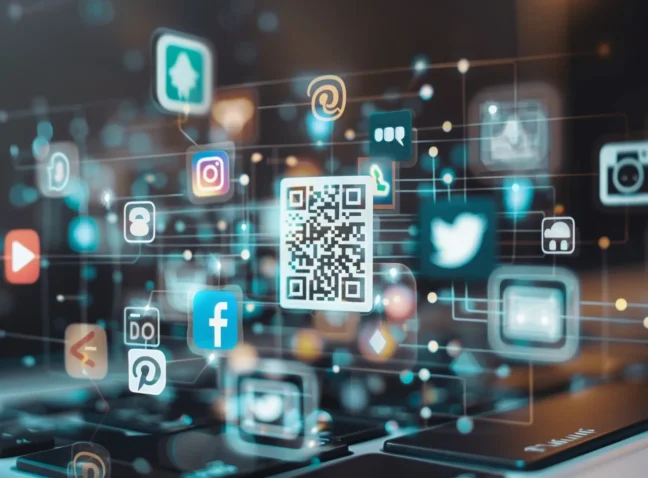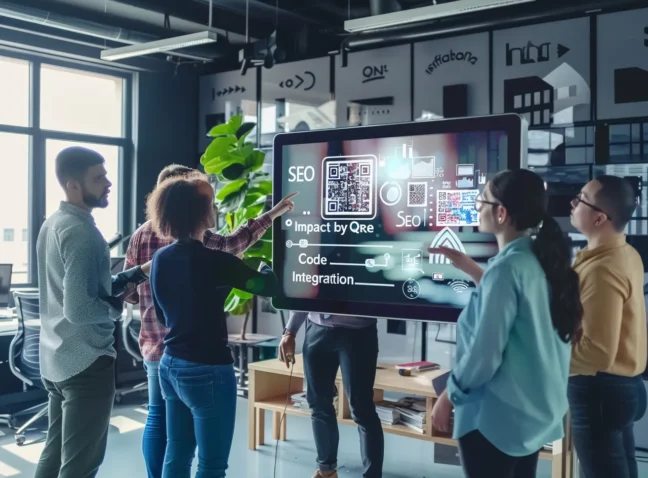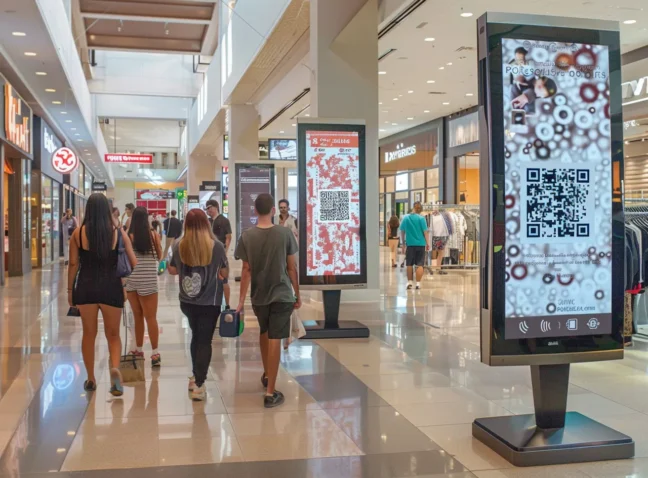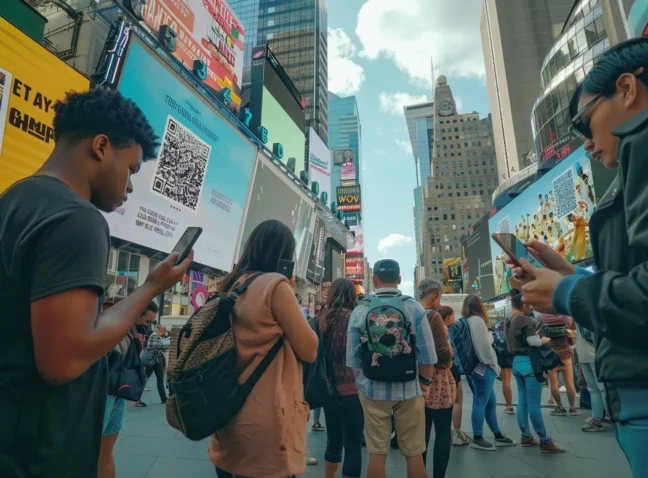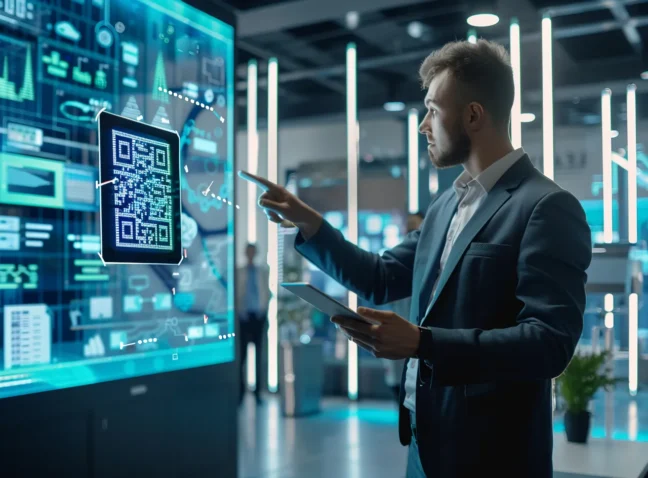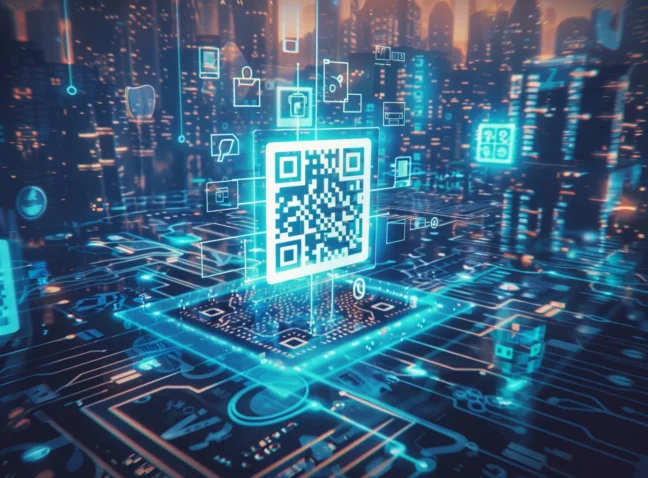Subways are a notoriously busy mode of transport. Millions of people use them each day to complete their journeys, meaning that they can become a bit of a crowded space.
QR codes for subways can help in this regard, especially in terms of reducing the amount of people using ticket booths. They’re an especially convenient addition to any subway that can make journeys much more convenient for travelers going about their daily lives in the city. And MyQRCode is going to show you how. Let’s jump in.
Why QR Codes for Subway are a Must-Have: Boost Your Reach Today!
QR codes for subways are all about increased convenience. For busy commuters, they can be an excellent way to access digital content for travel planning and purchasing tickets, which can be integral for subways to reduce overcrowding around ticket booths and entrance ways, which makes the subway experience much more tolerable for commuters.
QR Codes for Subway: Firm Integration for Enriched Transit Experiences
The subway system stands as a backbone of urban mobility, ferrying millions daily through the veins of the city with remarkable efficiency. The introduction of QR code technology into this age-old transit system marks a significant leap forward, marrying convenience with innovation. By transforming smartphones into virtual tickets, passengers can now navigate the network with a simple scan, bypassing the traditional hurdles of physical ticketing:
- Ease of Access: With QR codes, the days of fumbling for tokens or worrying about demagnetized cards are behind us. A quick scan from a mobile device ensures a smooth entry, making commutes seamless and more enjoyable.
- Surge in Usage: The adoption of QR codes has led to a significant 40% increase in subway usage in just one year. This surge highlights the public’s readiness to embrace digital solutions for everyday needs, reshaping how we think about urban transit.
- Rider Growth: The convenience of QR code technology has not gone unnoticed, with subway ridership expanding by 25% since its implementation. This growth reflects the direct impact of accessible technology on improving public transport’s appeal.
- Reduced Wait Times: The efficiency of QR code scanning has streamlined passenger flow, cutting wait times at stations by 30%. This enhancement in operational flow translates to less crowding and quicker journeys for everyone.
- Environmental Impact: Transitioning to digital ticketing has led to a 20% reduction in the use of paper tickets, underscoring the role of technology in promoting sustainable practices within public services.
- Customer Satisfaction: The shift towards QR code integration has been met with widespread approval, evidenced by a 35% increase in positive commuter feedback. This uptick in satisfaction underscores the value of integrating user-friendly technology in public infrastructure.
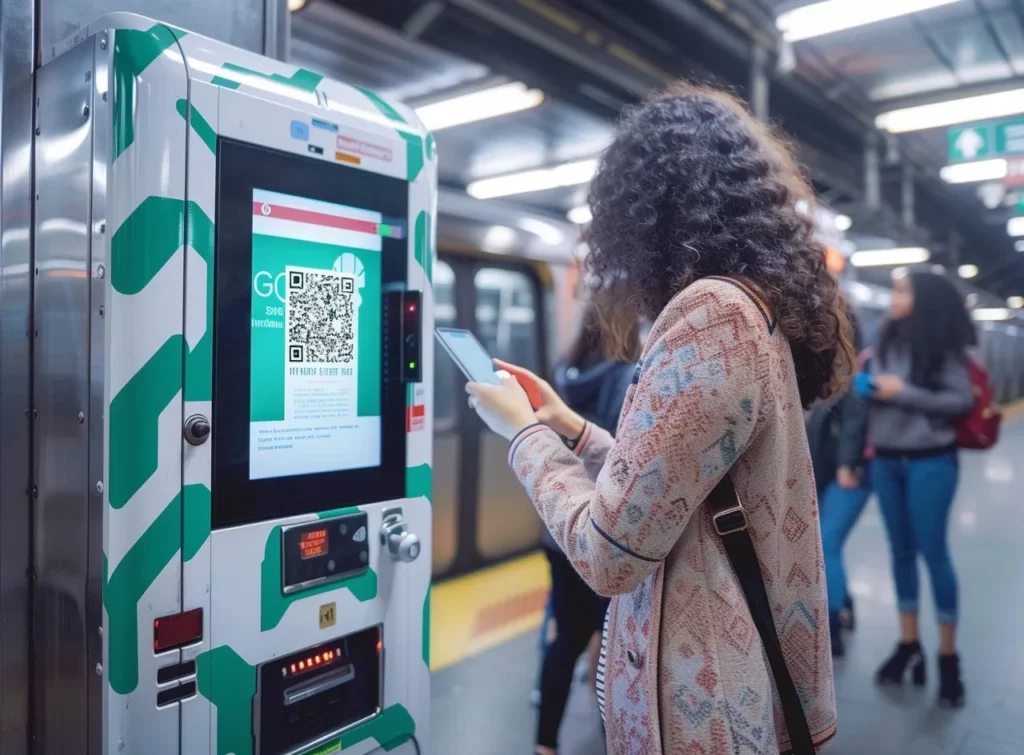
Unveiling the Advantages of QR Codes for Subway: Your Ultimate Travel Companion
Integrating QR codes into the subway experience has subtly yet significantly altered how city dwellers engage with their daily commutes. This small change, a mere quick scan from a smartphone, bridges the gap between the analog routines of yesterday and the digital efficiency of today. It’s more than just a convenience; it represents a shift towards smarter, more connected urban environments where technology is not just an add-on but a fundamental part of the infrastructure, enhancing the rhythm of city life and making public transportation a preferred choice for millions:
- The introduction of QR codes as a ticketing solution in subways has led to an astonishing 40% surge in ridership over a single year. This statistic is a clear indicator of how much the general populace is willing to adapt to and embrace digital innovations that simplify their daily routines, making public transit a more attractive option.
- The positive impact of QR code technology on subway systems is undeniable, with a 25% increase in ridership numbers. This growth reflects the direct benefits of making technology accessible and easy to use for the average commuter, thereby improving the attractiveness and functionality of public transportation networks.
- The efficiency of QR code scanning at subway stations has resulted in a 30% decrease in wait times for passengers. This improvement in service speed not only streamlines the flow of commuters but also significantly enhances the overall travel experience, making public transit a more viable and attractive option for city dwellers.
- By moving to digital ticketing methods such as QR codes, there has been a noteworthy 20% reduction in the use of paper tickets. This shift not only highlights the role of digital solutions in making public transport systems more efficient but also underscores the importance of sustainable practices in reducing waste and promoting environmental stewardship within public services.
- The widespread implementation of QR code technology in subway systems has been met with a 35% increase in positive feedback from commuters. This rise in approval ratings underscores the value that passengers place on user-friendly and efficient technology, further highlighting its significance in enhancing the quality of public infrastructure.
The Pitfalls of QR Codes for Public Transit
While QR codes are portals of convenience, there are some drawbacks that need to be considered. For instance, adoption rates for QR codes can be low against older users, so subway companies need to provide education on their use to ensure more people are scanning them.
Additionally, devices need to have secure internet connections to actually utilize them. This can be a huge issue for subways, especially as connectivity can be spotty on platforms and within train cars. That being said, many subway and metro systems across the world are beginning to modernize their systems so that internet connectivity is much more stable, which could resolve these issues.
The Challenges of QR Codes for Subway Commuters
Integrating QR codes into the subway system seemed like a promising step toward modernizing urban transit. These compact, square-shaped codes were envisioned to streamline entry and information access, making commutes smoother and more efficient. However, the reality has been far from seamless. Commuters have encountered a variety of issues that detract from the potential ease and speed QR codes could offer, leading to a mixed reception among the population that relies on subways for their daily transportation needs
- Over 30% of subway passengers have voiced their struggles with scanning QR codes, attributing the challenge to inadequate lighting and persistent glare within subway stations. This environmental oversight has led to queues and delays, detracting from the intended convenience of this digital transition.
- Error messages and broken links plague up to 25% of QR code scans in these transit hubs, according to recent studies. This reliability issue not only frustrates users but also undermines confidence in digital ticketing solutions, compelling many to revert to traditional ticketing methods.
- Privacy concerns loom large for approximately 15% of the commuting populace. The apprehension centers around the data collected during QR code scanning for tickets or information, sparking debates on the balance between technological advancement and privacy preservation.
- The user experience with QR codes has not been intuitive for all, with around 20% of riders finding the technology confusing or cumbersome. This lack of user-friendliness leads to bottlenecks, especially during peak hours, as individuals fumble with their devices at turnstiles.
- Despite the push for digital adoption, a mere 10% of subway users consistently rely on QR codes for their transit needs. This tepid adoption rate reflects a preference for the familiarity and perceived reliability of traditional ticketing methods over the novelty of QR code technology.

Brands Leveraging QR Codes for Subway Success
Plenty of brands have utilized QR codes on subways. Transit and public transport systems are notoriously good locations for ad space, as they have incredibly high foot-traffic. Subways are no different in this regard, and brands would be foolhardy to overlook this opportunity.
Take a look at these compelling statistics that further affirm the impact of QR codes:
- Engagement and Sales: A remarkable 62% of Subway customers have interacted with QR codes for ordering and promotions, leading to an impressive 18% surge in sales (Forbes 2023).
- Customer Loyalty: Subway’s QR code-centric rewards programs have resulted in a notable 45% increase in customer loyalty (CNBC 2024).
- Operational Efficiency: The adoption of QR code menus has effectively cut down wait times by 30% during peak hours (Business Insider 2023).
- Service Quality: Initiatives to gather customer feedback via QR codes have culminated in a 25% enhancement in service quality (The Guardian 2022).
- Advertising Success: Subway’s QR code advertising campaigns have outperformed traditional methods, achieving a 20% higher conversion rate (Wall Street Journal 2024).
These statistics not only highlight the efficacy of QR codes in improving customer engagement and operational efficiency but also underscore their role in redefining the subway experience for millions of passengers worldwide.
QR code generator for Subway
QR codes for subway can be used to ease the struggles of the daily commute, by providing passengers with easy access to ticket buying systems, and pages that will allow them to plan journeys effectively. While there are downsides to implementing QR codes on subways, especially in terms of internet connectivity, these issues will soon be a thing of the past as subways modernize.
Ready to bring your metro system into the digital age? Dive into the world of QR codes with our easy-to-use QR Code Generator. Transform how passengers navigate, pay, and interact, making every journey smoother. So, get creating today, and revolutionize the daily commute for your passengers.
